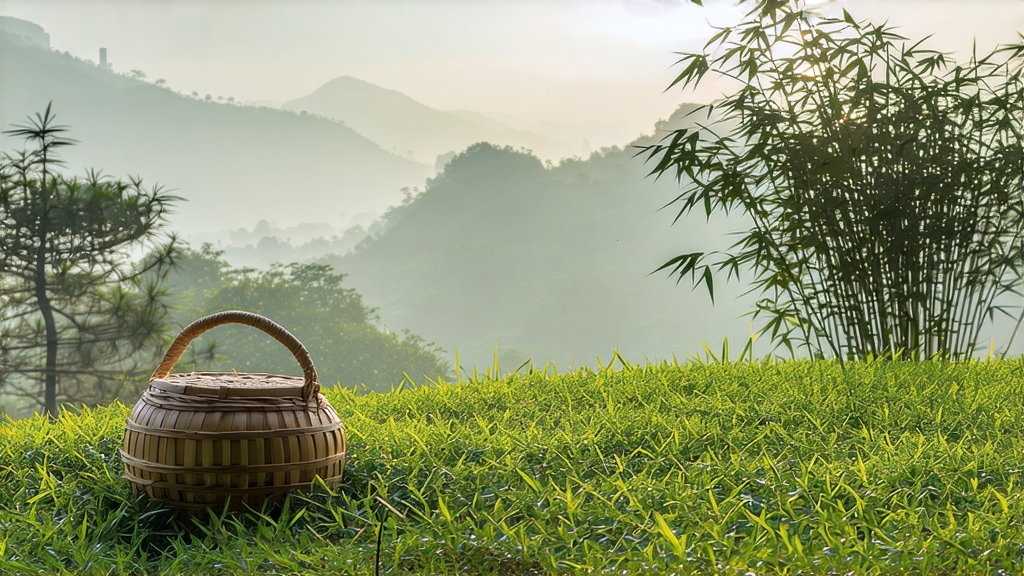
Tucked high above the Sichuan basin, where the Min River carves clouds into the slopes of Mt. Meng, a few hundred kilograms of downy buds are still hand-turned each spring to keep alive a flavor that once graced the porcelain cups of Tang-dynasty emperors. Meng Ding Huang Ya—“Meng Ding Yellow Bud”—is the least known yet most aristocratic member of China’s yellow-tea family. While green tea’s grassy brightness dominates export menus and dark pu-erh hogs the collector’s spotlight, this gentle yellow tea drifts in a quiet limbo: too subtle for novices, too scarce for supermarkets, too delicate for mass production. For those willing to listen, however, it whispers stories of mountain monasteries, imperial couriers, and a slow enzymic dance that turns fresh leaf into liquid sunshine.
History: from monk’s medicine to emperor’s tribute
Tea historians generally agree that the Meng Ding range—part of the western Qionglai Mountains—has been cultivated since the Western Han dynasty (206 BCE–9 CE). The Daoist Ge Hong wrote of “cloud tea” gathered by hermits who believed the mist itself condensed into the leaf. By the Tang (618–907), the area’s pristine springs and cool nights had attracted Buddhist monks who planted terraces around the Ganlu Temple. Their tender spring buds, steamed and pressed into cakes, travelled the Tea-Horse Road toward Tibet. When Song emperor Huizong (r. 1100–1125) demanded “first spring buds” for the palace, Meng Ding leaf arrived in Chengdu, was sealed with camphor wood, and rushed by relay riders to Kaifeng. The Ming shift from compressed to loose-leaf tea coincided with the discovery that a light, humid “sealing” after fixing produced a sweeter, rounder cup. The technique—later codified as the yellowing step—was perfected here before spreading to Hunan and Anhui. Qing gazetteers list Meng Ding Huang Ya among the “eight tribute teas,” taxed at one tael of silver per liang of finished leaf, roughly a month’s wage for a laborer. After 1949 the gardens were collectivized; yellowing was deemed too laborious and abandoned for simpler green styles. Only in 1978 did a retired monk-monk named Shi Guangde teach the process to county technicians, restarting production at a scale that today barely exceeds 3,000 kg a year.
Micro-terroir: why the mountain matters
Mt. Meng rises to 1,456 m, but the prized plots sit between 800–1,200 m inside a perennial cloud belt. Diurnal swings of 10–12 °C slow amino-acid breakdown, stacking the leaf with L-theanine and fragrant volatiles. The soil is a crumbly quartz-rich loam, pH 4.6–5.2, leached by 2,000 mm of misty rain that falls across 280 foggy days. Because the mountain blocks the cold Tibetan Plateau winds, spring starts early; buds break in mid-March, two weeks before the plains below. Local lore divides the slope into “upper palace, middle palace, lower palace,” echoing the Daoist trinity. Only upper-palace leaf, plucked before Qingming festival, qualifies for authentic Meng Ding Huang Ya. One mu (⅙ acre) yields barely 4 kg of finished tea, explaining the eye-watering retail price of US $1,200–1,800 per kg for pre-Qingming lots.
Plucking standard: one bud, one leaf, one heart
Workers climb the terraces at dawn, baskets slung over one shoulder, wearing wide bamboo hats that double as umbrellas. The pick is rigid: 1.5–2 cm unopened bud plus the first unfolding leaf, the so-called “sparrow’s tongue.” Anything longer oxidizes too fast; anything shorter lacks the sugars needed for yellowing. A seasoned picker gathers 600 g of fresh leaf per hour; 5 kg are required for 1 kg of dry tea, translating into 8–9 hours of stooped labor for each 100 g tin you open at home.
Craft: the four “gentle fires”
Yellow tea is often described as green tea with an extra step, but Meng Ding Huang Ya demands a choreography of four gentle fires, each calibrated to coax rather than coerce the leaf.
- Fixing (shaqing): 180 °C on a bronze wok for 3–